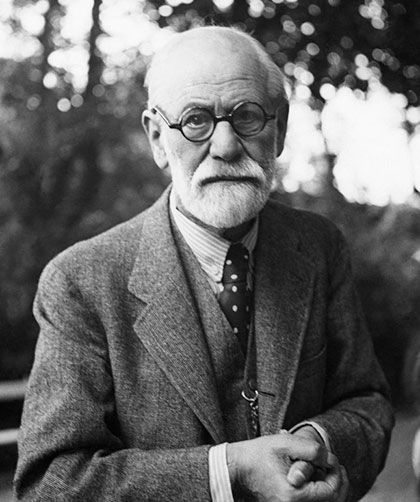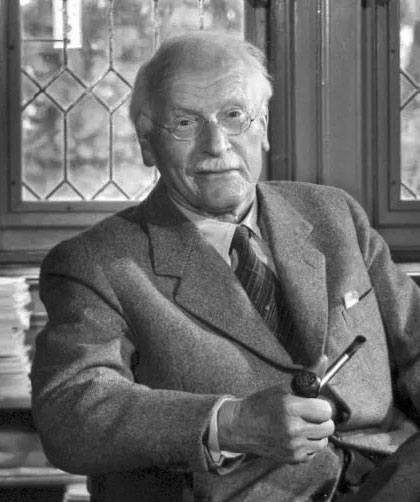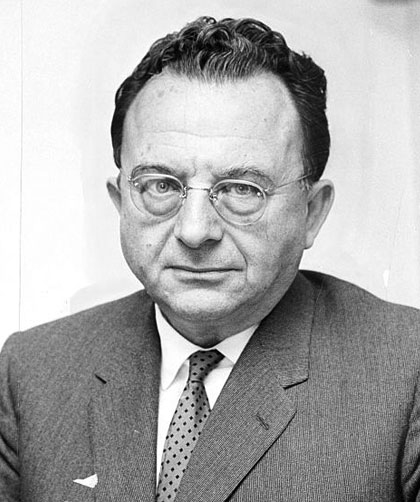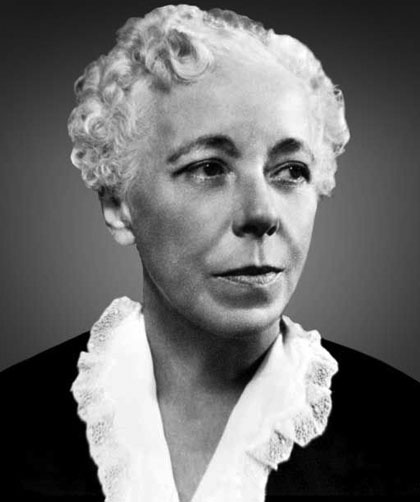Psychoanalysis
Published on November 13th, 2019
Updated on January 2nd, 2024

Contents
Psychoanalysis is a theory developed by Sigmund Freud. It is a theory that focuses on unconscious drives, and how they fuel personality. The theory focuses on how the unconscious affects human behavior. It indicates sex and aggression as the primary driving forces of personality.

Freud received both praise and criticism of his work with the psychoanalytic theory. His works fueled the development of the theory, and the birth of new theories in psychology.
Sponsored by

Choose a therapist to work with and start healing with 20% off from BetterHelp.
Click HereIn its essence, psychoanalysis is the investigation of the unconscious mind. It explores a person’s unconscious through:
- Dream analysis
- Free association
- Exploration of the mind’s defense mechanisms
Freud’s work with psychoanalysis inspired works of future psychologists and theorists, like:
- Alfred Adler
- Erich Fromm
- Karen Horney
- Carl Jung
Application of Psychoanalysis
The intention of psychoanalysis is to explore the unconscious mind. It takes into account the levels of the mind in the treatment of mental disorders. It is a form of talk therapy that is used to investigate unconscious drives and issues that create mental illness. Psychoanalysis is often applied to social psychology and political studies.
Psychoanalysis pulls from Freud’s theories of the unconscious mind. Theories involving the levels of the mind and the provinces of the mind are often used to interpret unconscious drives for human behavior. Psychoanalysis also considers the significance of defense mechanisms. They are considered to contribute to the development of compulsive and neurotic behavior.

Dream Analysis
Sigmund Freud considered dreams to be the passageway into the unconscious. He relied heavily on the interpretation of dreams. He considered dreams to be a means to tap into the unconscious mind.
Dreams are interpreted in different ways in therapy. The interpretation of dreams depends on the therapist’s approach to treatment and counseling. With psychoanalysis, dreams are used to interpret unconscious conflicts and desires. They are considered to consist of two types of content:
- Manifest Content – The contents of the dream that the dreamer remembers.
- Latent Content – The symbolic meaning behind contents of the dream.
A therapist will use manifest content to explore repressed desires and symbols in the dream.
Jungian Analysis of Dreams

Dr. Carl Jung took an approach similar to Freud’s analysis of dreams. He believed that dreams represent unconscious symbols for hidden desires and meaning. The difference is that Jung’s approach in the analysis of dreams allowed the dreamer to explore the deeper meaning of the dreams.
In Jung’s approach to psychoanalysis, the therapist takes a back seat. The dreamer leads the journey into understanding the deeper message behind the dream.
Jung also considered dreams to be a method of expressing needs and desires, rather than a means to repress them. This contradicted Freud’s theory. Freud interpreted dreams as symbols of repressed desires and drives in the unconscious.
Fromm’s Analysis of Dreams
Erich Fromm also believed that dreams were comprised of symbols. He further believed that there are common symbols in dreams between different groups of people. He believed that many of the symbols in dreams are universal.
Example: People who are anxious or stressed may dream about their teeth falling out. Similarly, people who are feeling vulnerable in a life situation my dream of being naked in a classroom.

Fromm firmly believed that professionals should not see patients for their problems, but rather for their needs. He believed that the symbols in dreams are influenced by the following factors:
- Regional climate
- Geography
- National influence
- Culture
- Human nature
- Religion or spirituality
There are many factors that can influence a dream. Because of this, Fromm believed that therapists should focus on the patient experience. They should not focus on the scientific data or theory of dream analysis.
Free Association
Free association is a technique that focuses on a person’s train of thought. When using free association, a person is asked to verbalize each immediate thought that comes through their mind. It does not matter whether or not it is relevant to the conversation.
With this technique, the therapist is able to follow with the patient’s train of thought. This process is thought to lead to the workings of the unconscious mind. Freud believed that free association helped to minimize resistance in therapy.
Transference
Free association is also said to help with transference. Transference is a term used to identify when a person is unconsciously transferring their feelings for one person onto another person.
Example: Mary moved to Alabama from Texas in April. She finds herself missing her mother dearly. She has noticed that her neighbor reminds her a lot of her mother, so she often finds comfort in her company.
Transference can happen often in therapy. People may treat or think of their therapist as if they were another person of interest.
Example: A person who had a resentment and distrust toward their mother may struggle to trust their female therapist, who is of similar age to their mother.
Most people will experience transference at some point in their life. Transference is not indicative of mental illness. Even though it does not indicate mental illness, it can cause issues in therapy if not addressed.
Horneyian Application of Free Association

Dr. Karen Horney is the founder of the Horneyian approach to psychoanalysis. Horneyian therapists often use free association with patients. The goal of using Freud’s technique of free association is to help move patients toward self-realization.
Horneyian therapists using free association will ask their patients to say each thought that comes to their mind. The challenge in this exercise is that patients are asked to express their thoughts, no matter how embarrassing or indecent they are. They are encouraged to express what they feel in the same moment.
The goal for Dr. Horney’s approach is to reveal the patient’s idealized self-image. In doing so, the patient develops confidence and responsibility. This promotes progress toward self-realization.
The patient gains a deeper understanding of their desires, feelings and beliefs. They begin to understand how their struggles to achieve their ideal self has held them back from seeing their true self. They learn to accept who they are, while working toward who they want to become.
Defense Mechanisms
Sigmund Freud began the creation of defense mechanisms in the 1920’s. His daughter, Anna Freud, picked up the concept in the 1940’s, and refined the purpose, use and classifications of each defense mechanism.
Freud explains that it is completely normal for everyone to use defense mechanisms. While the use of defense mechanisms is normal, Freud maintained that their use can sometimes go too far. Use of defense mechanisms becomes harmful when they are used in extremes.
The affected person begins to suffer when defense mechanisms are used:
- Compulsively
- Repetitively
- Neurotically
The primary defense mechanisms defined by Sigmund Freud include:
Repression
Repression refers to the act of forcing impulses and feelings into the unconscious. The feelings and impulses that are repressed are uncomfortable and tough to cope with in the conscious mind.
When an impulse or feeling is repressed, several different things may happen:
- The affected person may experience anxiety. This is the result of repressing aggressive or sexual impulses.
- The repressed impulses cause the affected person an intense sensation of anxiety as they force themselves to consciousness.
- The repressed impulses, thoughts and feelings can manifest in disguise. They do so by being displaced onto other objects of attention.
Example: Kate has romantic feelings for Sally’s boyfriend, Joe. While Kate wants to fulfill her sexual desires and romantic feelings for Joe, she knows it would hurt Sally deeply. Instead of acting on her impulse, she pushes it down into her unconscious.
Reaction Formation
Reaction formation happens when a repressed impulse is disguised to reach consciousness. With reaction formation, the repressed impulse is disguised as its opposite. It comes to consciousness as an exaggerated opposite of the impulse.
The disguise is so effective, that the affected person even believes the opposite impulse to be true. In reality, the opposite impulse is a manifestation of the repressed impulse.
Example: Kate begins to ignore Joe. She works hard to display complete disinterest in him. Kate’s display goes so far that her behavior is considered to be rude by others.
Displacement
Displacement is different than reaction formation. It does not disguise the repressed impulse. It instead redirects the impulse onto other, less threatening targets. There is still deception, but there is not an exaggerated display of the opposite impulse toward the object in question. The deception instead lies in the target of the repressed impulse, as it is misdirected away from the object.
Example: Jennifer grows resentful of Sally for having what she wants, but she knows she cannot display this resentment toward Sally. Instead, she redirects her anger and resentment toward her mother. She knows her mother is a safer target for her anger, frustration and aggression.
Fixation
Fixation occurs when a person faces a situation that induces so much anxiety that they revert to habits that bring them comfort. They focus on the sensation of the present moment, rather than facing the challenge that is confronting them.
It is said that fixation derives from the id. The id activates primitive means of survival and protection. It is self-serving, and its goal is to bring satisfaction in order to reduce anxiety.
Freud’s theory of psychosexual development revolves around stages of life, where a person confronts different fixations. Freud believed that in order to progress to the next stage of development, one must resolve the fixation that represents the stage. In overcoming the fixation, a child grows and progresses to the next stage of psychosexual development.
Example: Gary is struggling to adjust to the new demands of college life. He is overwhelmed with his workload and finds himself missing home. He is also not getting along with his roommate.
In times of great stress like this, Gary tends to pick up his nail biting habit. The nail biting brings him some relief in the moment, even though he knows it is not a good habit to have.
Regression
The term regression refers to the act of engaging in behaviors that displayed during an earlier stage of development. In times of distress or extreme anxiety, a person may regress back into earlier behaviors. They do so in an effort to find comfort or relief from emotional distress.
Regression is often temporary, but in extreme circumstances can cause a person to get stuck in a previous stage of development.
Example: Peter has become so overwhelmed with stress from his workload at school, he has regressed into spending his days in bed. He stays in the fetal position in bed in an effort to hide away from the world, and is considering quitting school to return home and live with his mother.
Projection
Projection is the act of projecting your negative internal thoughts and feelings onto external people and objects. When a person is feeling down or frustrated with themselves, they can project their unhappiness and unsettled feelings onto what is around them. They may lash out at family. They may punch objects or begin to show signs of aggression and anger without an apparent reason.
Example: Ray feels like a failure. He does not believe he is smart enough to finish school. He has never experienced this kind of stress before, and never thought he could struggle so much academically.
Ray’s views of himself are so intensely negative that he does not know how to handle them. Instead, he finds himself lashing out at his friends. He has become very critical of what others think and say, and he has a short temper and low tolerance for most things that they say or do.
Ray is not consciously aware that his frustrations are really about himself. This causes him to project his negative thoughts about himself onto the people around him.
Introjection
Introjection is a defense mechanism that is utilized to keep feelings of inferiority at bay. It involves adopting attractive qualities of others onto yourself. This is done in an effort to mask inferior feelings. Introjection adopts the habit of inflating your own sense of self-worth to compensate for insecurities.
Example: Kyle is the youngest of 3 brothers. His oldest brother is an academic genius and his middle brother is a baseball star. Kyle is not coordinated, and does average in school. Compared to his brothers, Kyle feels like there is nothing special or outstanding about him.
Kyle recently began watching a television show about Agent Karter, a hero with street smarts and charisma. Kyle became infatuated with the character, and how everyone in the show marveled at him. Kyle soon began copying Agent Karter’s behaviors and mannerisms in order to feel a stronger sense of self-worth.
Sublimation
Sublimation is the final defense mechanism that Freud speaks about in the psychoanalytic theory. Sublimation is thought to be geared toward the individual and the social or cultural norm. It stems from a combination of personal pleasures and social norms.
When a person engages sublimation, they channel their negative energy into positive behavior. They focus on behavior that is not harmful to themselves or their society. They use their angry or anxious energy to be productive, rather than destructive.
Example: Bill was watching the news. On the news, he saw that a dog was beaten so badly that it had to be put to sleep. He realized that he knew the man who had beaten the dog, and became enraged that someone would do such a thing. His first impulse was to lash out at the man who had beaten the dog, but he knew that would be destructive and only cause more harm.
Instead, he decided to begin volunteering at the local animal shelter. He took all of his angry and resentful energy and focused it into helping animals who were in bad situations feel safe again.
Sponsored by

Find an affordable therapist online with 20% off from BetterHelp.
Click Here






Leave A Reply